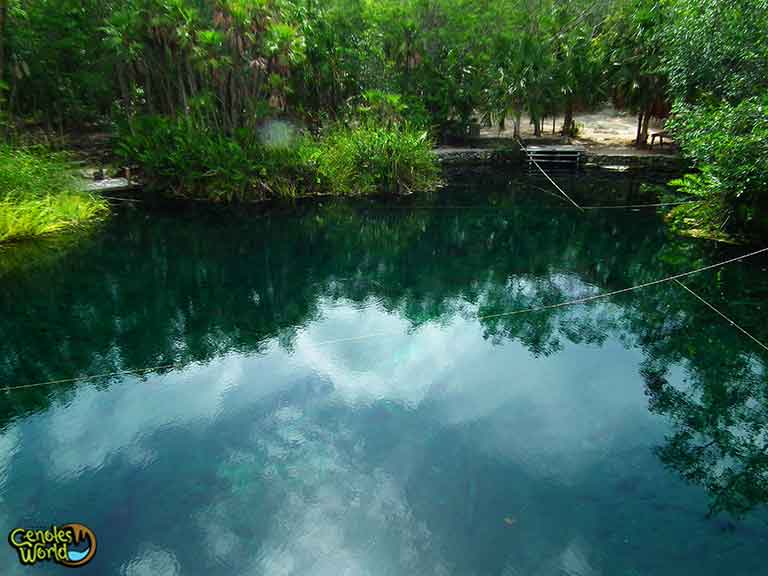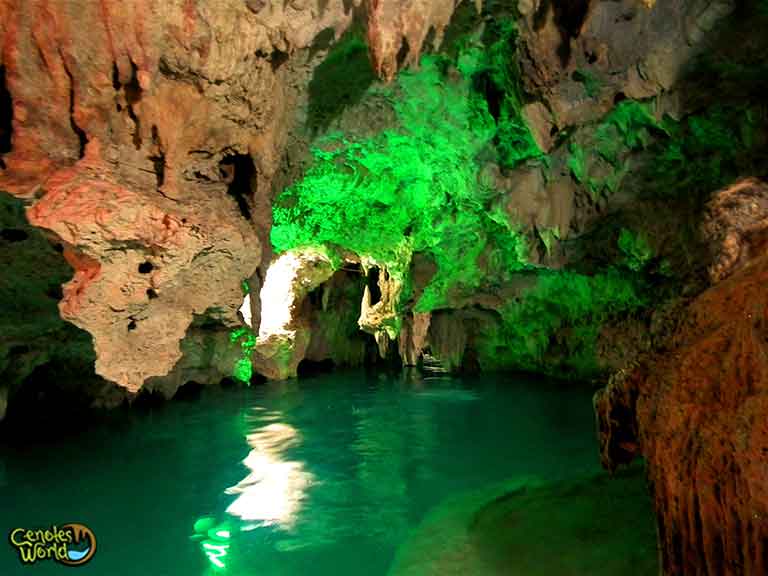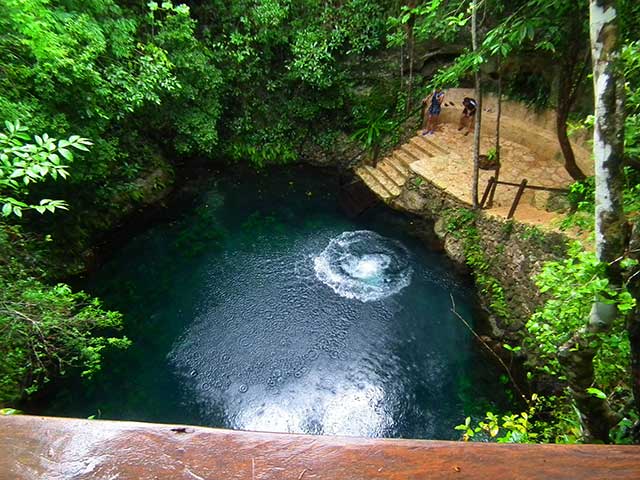What is a cenote
A cenote is a natural pit or sinkhole formed by dissolution of rock resulting from the collapse of limestone. The word cenote derives from the mayan word "Ts'ono'ot" and refers to any subterranean chamber with accessible water. Cenotes were the only source of freshwater in the jungle and are considered sacred, cenotes were sometimes used by the Mayan civilization for sacrificial offerings because the mayan considered cenotes an entrance to Xibalba or Underworld (place of fear).
Currently, we can visit many different types of cenotes in the Yucatan Peninsula or Riviera Maya, the most common to identify are cenotes open, semi-open and underground caves!
Open Cenote
The open cenotes or open-air cenotes are the most visited, easily accessible and the oldest, this as a result of the collapse of limestone until the water have been exposed on the surface. Some of these open cenotes have connection with the sea, caverns and other cenotes forming underground connections. Its water is fresh and its color may range from turquoise green to deep blue; depends on the depth, vegetation and season.

Semi-open Cenote
Semi-open cenotes can be considered an entrance to the "underworld" or "Xibalba" (where the spirits reside after death ). Semi-open cenotes have some holes to let in the daylight and provide a view over the beautiful chamber and its spectacular cave formations; stalactites, stalagmites, curtains and columns. Its water is crystalline, cold and usually you can see many fish. This kind of natural pool is known as a young cenote where can be found awesome underwater caves.

Underground Cenote
Underground cenotes are the youngest and most spectacular usually surrounded by lush vegetation, its beauty can be explored for extreme adventure lovers. These cenotes are flooded caves and there is very little light, the fragile biological life and formations must be respected. Do not miss these marvelous and fall in love with the Yucatan Peninsula!





